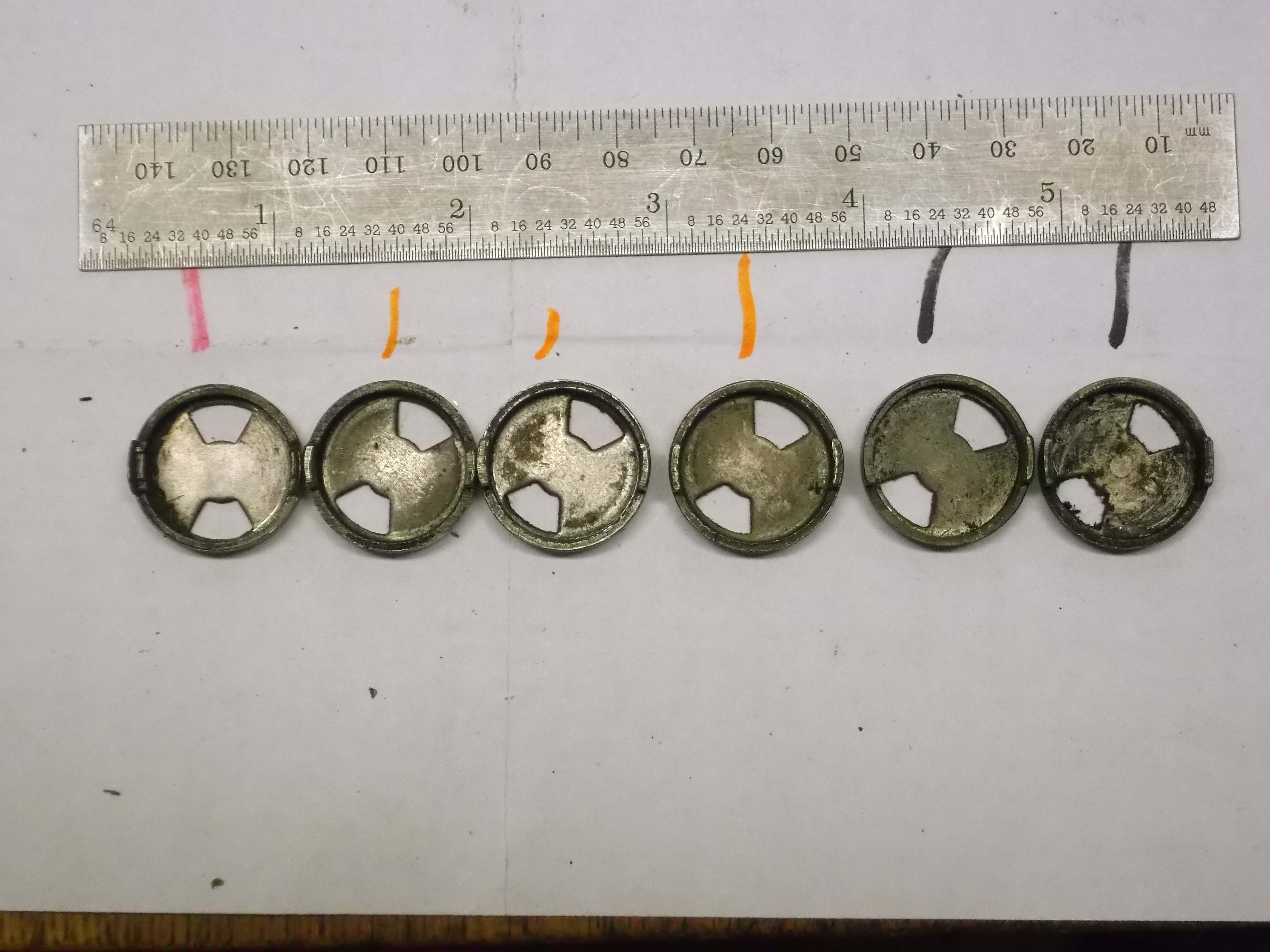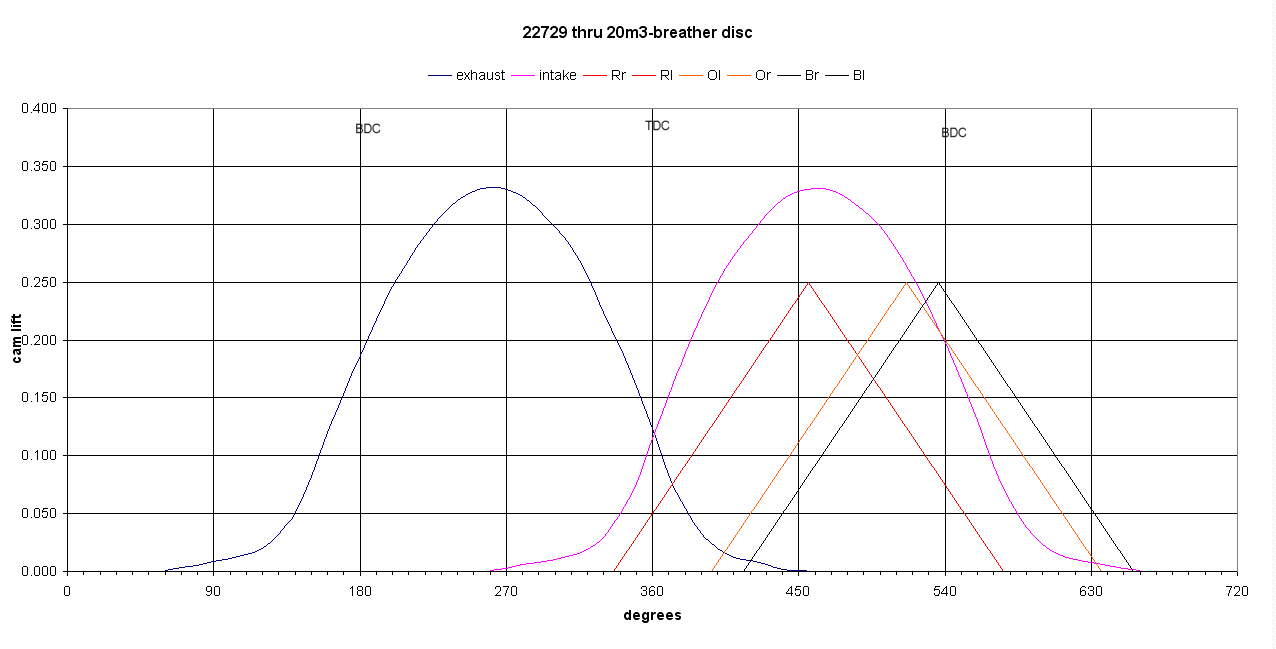hello Iam searching for Camshaft breather stationary plate for my dominator 650 ss.
Have some one drawing of this part?
or which type to use on ,my 1964 SS
i found some diferent tipes
Thanks for any informations
Tomas
camshaft end breather
- Log in to post comments
plumbstead parts
hello but these parts numbers may of changed with the take over from Plumstead in 1963
And I have No information On Plumstead parts , Has I only concentrate on Bracebridge Street motorcycles so there for do try and get a parts book relative to your motorcycle see ebay or Norton Owners Club Shop, yours Anna J
- Log in to post comments
The breather plate did…
The breather plate did change at some point,presumably to alter the breather timing , I think it was in the 650 time line.
- Log in to post comments
I doubt it would make much…
I doubt it would make much difference, If you are spitting lots of oil out the breather its usually a piston ring problem ,stuck, worn,broken or often not run in . Sometimes takes a couple of thousand miles and a good thrashing to bed them in.It is possible to put the breather plate in and jam it, Or even leave it out completely. If you turn the motor over you should hear it working and be unable to blow air back into the motor on the upstroke.
- Log in to post comments
63-65 66-68
stationary T2078
rotary breather 24301 1963-1965 = ALL NHT includes 64 650SS
rotary breather 24301 1966-1968 = ALL NHT
24301 all commando thru 20M3
No literature found for 20M3S but is still rotary breather
- Log in to post comments
Stationary cam breather + rotary cam breather
I have not found much on the stationary plate even though I did replace an atlas one a long time ago. The DPO had tried to remove the drive side cam bush using a hammer and punch through the case hole and cracked the brittle hardened plate.
I am posting the rotary discs despite not knowing (yet) the specific application.
Each disc window is 60 degrees wide.
The two drive tabs are at (CAM+90 deg and -90 deg from cam lobe center) therefore cam and piston TDC.

- Log in to post comments
I knew they changed at some…
I knew they changed at some point, How do we find out when?.Apears to be 3 types.Hudson would have memorised the engine nos and part nos!!. He was a one off.
- Log in to post comments
Rotary breather from 62 SS
I had one 62 650SS engine without a cam in it and looked to see the black oily breather still in there.
I had to use compressed air to blow it out. My finger could not grab it. Once I saw it, I was stunned to see it is the RED style/spacing.
I was assuming the stationary discs hole position might change as the NHT evolved. It's orientation is based on the dowel pin drilling position. I went to a 52 M7 500, 57 600, the 62 650, 65 20, and 71 20M3S and All the stationary windows are at 2 and 8 oclock.
I will have to calculate the vent timing and see what the possible reasons are for the other two rotating discs.
- Log in to post comments
This anomaly has lodged in…
This anomaly has lodged in my brain like an ear worm jingle and woke me up at 4am. I have not found the remembered reference and have looked in all my official reference books. It must be in the 60's John Hudson engine rebuild article that I have yet to locate.Its just typical of the man who spent years stripping down problematic motors all over the uk . His success in problem solving using very basic tools he could carry on a bike , working in dark sheds,alleys and if lucky a warm kitchen was legendary. His observation skill and encyclopedic memory was a wonder and I received the full "benefit" when on a train journey with him. The stuff that no one else knew was his bread and butter.
- Log in to post comments
Quick Study in Reverse Engineering
Sounds like John Hudson and I are similar in some ways. Might have liked to have met him.
If Tomas feels to continue this thread with a bit of research, we might get his question answered.
Some initial data is presented...after a search for rotary PN
D12-934
T2075
24301
- Log in to post comments
rotary disc timing
Previously shown red/orange/black timing discs, shown against SS cam timing and TDC/BDC reference.
breather opening is .25 square inches when fully aligned

- Log in to post comments
rotary disc
Hello I i dismantle my engine for big consumption of oil fotos here
https://freebiker.rajce.idnes.cz/dominator_oprava_motoru_2019
I measure when rotation disc open and close
before TDC closing 35mm and fully closed is 22mm before TDC
after TDC opening 44mm and ful open is 64mm after tdc
can anybody say is it all right?
Thanks for informations and sorry for my english.
- Log in to post comments
The breather timing was…
The breather timing was changed in 1962. I presume that was for the 650ss. possibly from lessons learned from the Manxman ?.
- Log in to post comments
I have been having problems…
I have been having problems with my Dominator breathing for some time. My article in Roadholder 314 following Tony Ripley's article 'Crankcase - Breather Theory' in Roadholder 302 provides details.
From David's photo above it appears there are essentially two types of rotary breather plate: the red type and the orange/black type. From his graph above the red type appear to be fully open halfway down the downstroke whereas the orange/black type are fully open around BDC. Thus the red type breather will be nearing closed when the pressure is highest (BDC) wheras the orange/black type is fully open. Also similar to the valve overlap concept, the orange/black type will continue venting on the upstroke after BDC until the pressure collapses. Intuitively the orange/black type look like a better prospect. I have the red type fitted to my bike.
The red type is a D12/934 (later changed to T2075)
The orange/black type is a 24301
All camshafts appear to have the breather disc driving cut outs inline with the woodruff key slot. My camshaft is a Daytona with QR
The stationary disc T2078 appears to be constant throughout the range and years with the holes being between 12-2 and 6-8 o'clock.
On the face of it, I think I could improve my situation by installing the 24301 rotating disc. can anyone see a downside to this approach?
Other questions
Is anyone running with the red type (T2705) set up on a pre '63 Dommie with no crankcase oil leaks/breather problems?
Is anyone running a pre '63 Dommie with an orange/black (24301) set up with no crankcase oil leaks/breather problems?
- Log in to post comments
Dominator Breather Timing
According to my John Hudson Notes, the engine breather timing disc was changed around engine 103749. Well into the Atlas era but before the move to Woolwich.
With the dogs at 6 & 12 o’clock the original port positions were at 3 and 9 o’clock. The later timing with the dogs also at 6 &12 became 10 and 4 o’clock.
- Log in to post comments
There is a big difference in…
There is a big difference in the timing , the only way to compare is to try them out in one engine. Can't see that happening any time soon. I'll bet JH knows the answer. Bless him.
- Log in to post comments
More on Hudson
John often pointed out that the original Hopwood engine design had far more to the breathing cycles within it than people realized and that messing about with these often caused unwanted side effects. For example the downward movement of the pistons helped to push oil and vapour up the drain tunnels onto the timing cog teeth, gears and chains. As well as oil towards the camshaft followers, lobes and pushrod ends. Owners who drilled or filled these tunnels, moved the breather piping or added a one-way untimed valve could do unintentional internal damage.
He pointed out that on an upward stroke of the pistons, an untimed one-way valve would cause a partial vacuum that actually pulled oil away from the oil pump causing a partial cavitation in the scavenge side. In turn causing the oil pump to run dry on said scavenge side and thus promoting wear to it.
- Log in to post comments




hello the camshaft end breather as far as I know is a standard part and had not changed over the years right up to the commando and you find this part in the Norton Parts Books over the Years now for the part numbers T2078 stationary plate cam breather T2075 rotary plate for camshaft breather T2108 spring for camshaft breather these are the 3 main parts for all Dominator twins including Norton Manxman 650 and Atlas 750 and P11/N15 750 models , YOURS Anna J